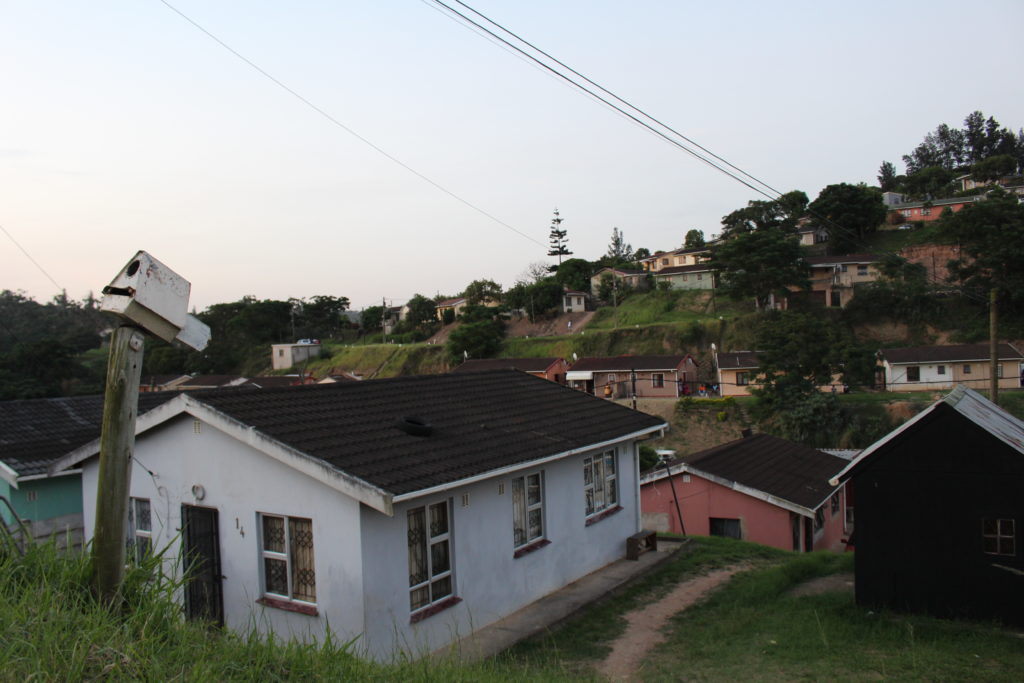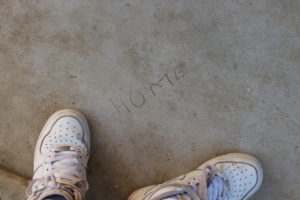People keep making me feel like I should be afraid. It began five months ago in North America when I decided to study in Durban, a place I barely knew besides some shallow knowledge of Apartheid. As a documentarian and student journalist, I tend to be drawn to the unknown. I have always been impulsively curious; in fifth grade my teacher even told me to stop asking questions.
So I yearned to learn more, outside of the required readings. I engaged everyone around me, even my dentist originally from Cape Town, to hear their perceptions of SA. Some were convinced I was entering a death trap and most farewells were tagged with an emphasized “Be careful.” One friend only said “You know Johannesburg has the highest murder rate in the world, right?” Fortunately, I listened through a filter. Most of these people had never set foot in SA and as Tequila Johnny, an employee at the hostel we stayed in during our first nights in Durban, explains, “People can be gullible if they’ve never been anywhere else.”
South Africa was in turmoil during Apartheid. The country was governed by a system of white supremacy and drenched in egregious violence and extremely high death tolls. But while this is an important part of SA’s history and racial oppression is still prevalent, Apartheid’s violence is in fact history, and SA is arguably moving forward. When I finally spoke to my fellow black African and black South African friends at my college before I left for Durban, the extremity of the opinions held by mostly white Americans came to light. I felt like I would be accepted into Durban’s warm community. One friend coolly replied to my fervent questions, “You will love it and they will welcome you.” These opposing perceptions are not surprising. People tend to be socialized to believe stereotypes of people and places outside of their bubbles. But what I am most surprised about is that perceptions about violence within USA and South Africa vary greatly. On a micro level, perspectives of the safety of Cato Manor, where I now live, fluctuate among black South Africans.

From the 1950s to the 1990s, Cato Manor was a center of political unrest. In the mid 1950s Chief Luthuli, the first African to be awarded the Nobel Peace Prize and president of the ANC, linked the struggles in Cato with the struggles against Apartheid. But Cato is much more than the violence, for it has a vibrant history. The trade unionist George W. Champion saw Cato as a “place where Durban natives (Africans) could breathe the air of freedom.” Today, I can see these inhalations, and I breathe it myself. Cato Manor is full of life, with primary schools, a market, a clinic, a multi-purpose center, and more developments underway. In my area, Masxha, children run up and down the street, everyone knows each other, young adults party in the bar around the corner from my home, and the people laugh from the bottoms of their souls. I take frequent walks with my neighbors and every few seconds there is a wave, an aunty or uncle walking by, or a hug and a friend wondering where they have been the past two days.
My first night on Florida Road I met a group of wealthy young black South African men. When I told them I was staying in Cato Manor, they were confused. One inquired, “Why is a white girl in Cato?” Another told me that I would soon be robbed by drug addicts. I pushed back and explained that the majority of the community knows and respects my homestay grandmother, Nana, and would never do such a thing. He replied, “It doesn’t matter. Eventually when they get desparate they will come. And grandmothers get raped all the time in Cato.” Just like with my white family members back home, I did not accept these extreme views. I may take them into account, but do not let them determine my behavior. Nana has told me that she feels safe in Cato. She sometimes leaves the house with the doors wide open and always hangs our laundry to dry in the front yard.
Bryan Stevenson, author of “Just Mercy,” believes that the key to mercy and understanding is proximity. These young men are not from Cato, but from more wealthier suburban neighborhoods, and are out of touch with the realities of Masxha. It seems that they are hung up on its past. I took a walk with my neighbor Tarry and told him about these young men. He was also in shock that they were black and held these perceptions. He shook his head and replied, “The robberies don’t happen here,” and explained how this community looks out for its own. He said, “Someone is always watching you.” Someone is always looking out for me in Cato. I can feel it. And the more time I spend here, the more I sit down and talk to the people around me, the more I feel at home. So people tell me I should be afraid of the shebeen (a local bar around the corner), the men, and Cato. But I am not afraid. I have found the more I push myself into discomfort, or into the places people tell me to be afraid of, the less afraid I am.
Two nights ago I walked into a shebeen with some local friends and sat down for a while. I relaxed with a circle of older Zulu men. They said I was the first white student to do so. The night turned out to be one of the best times I have had in Durban. We laughed, danced, and shared political views. In the midst of our conversation, one of them grabbed my wrist, held it next to his, and said, “Same blood.”

I now pass by the shebeen and look forward to greeting my new friends. This was a place I was terrified to walk past my first night in Cato. So why do the young men I met on Florida Road still hold their negative perceptions? Maybe they have just not actually spent enough time in Masxha. Although they are from Durban, they perpetuate the oppressive stereotypes of South African men. While it is important to recognize history and possible dangers, we cannot be afraid to live. I do not know much about where I am, but I do know that in order to disrupt my own fears and prejudices, and to take advantage of my time here, I will continue to close the distance, walk into my discomfort (definitely some more bars), and continue to find and revel in the truth.





